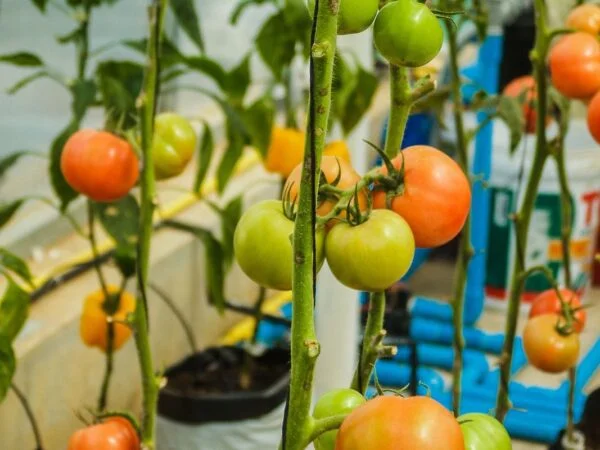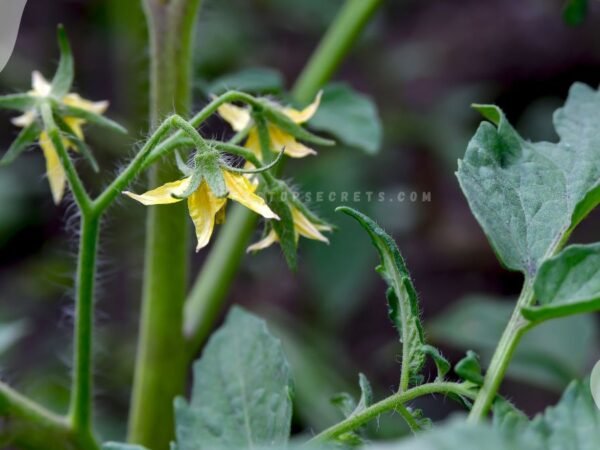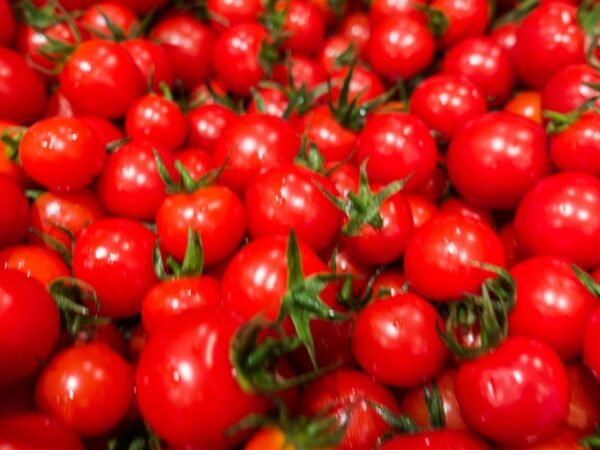Understanding the Temperature Requirements of Tomato Plants
Tomato plants have specific temperature requirements that are essential for their optimal growth and development. Understanding these requirements is crucial for gardeners and farmers to ensure successful cultivation.
Tomato plants thrive in warm temperatures, typically between 70°F and 85°F (21°C and 29°C). At these temperatures, they exhibit vigorous growth, produce abundant foliage, and develop healthy fruits. Temperatures below 50°F (10°C) can significantly impede their growth, causing stunted development and nutrient deficiencies. On the other hand, extremely high temperatures above 95°F (35°C) can lead to wilting, sunburned fruits, and reduced fruit set. Therefore, maintaining an ideal temperature range is vital for the overall health and productivity of tomato plants.
Factors Influencing the Cold Tolerance of Tomato Plants
Tomato plants are known for their warm-weather preferences, but their cold tolerance can vary depending on several factors. One important factor is the specific variety of tomato being grown. Different Tomato varieties exhibit varying degrees of cold tolerance, with some being more resilient to lower temperatures than others. For example, determinate varieties typically have a lower cold tolerance compared to indeterminate varieties. The genetic makeup of the plant plays a significant role in determining how well it can withstand colder conditions.
Another factor that influences the cold tolerance of tomato plants is their age and stage of growth. Young seedlings are generally more susceptible to cold damage compared to more established plants. As plants mature, their tolerance to lower temperatures tends to increase, allowing them to withstand colder conditions without suffering significant damage. Additionally, the stage of growth at which the cold weather occurs can also impact the plant's ability to tolerate low temperatures. For instance, if a cold snap happens during flowering or fruiting stages, the plant may experience detrimental effects, such as reduced fruit set or damage to existing fruits.
The interaction between these factors can greatly influence the ability of tomato plants to tolerate cold temperatures. By understanding these factors, gardeners and farmers can make informed decisions about which varieties to choose, when to plant, and how to protect their tomato plants from cold weather. In the following sections, we will explore the ideal temperature range for tomato plant growth, as well as strategies for adapting tomato plants to cooler temperatures.
Ideal Temperature Range for Tomato Plant Growth
Tomato plants, like many other crops, have specific temperature requirements for optimal growth and development. Understanding the ideal temperature range for tomato plant growth is crucial for cultivating healthy and productive plants.
Generally, tomato plants thrive in temperatures between 70°F and 80°F (21°C and 27°C), which are considered the optimal temperatures for their growth. In this temperature range, tomato plants exhibit vigorous growth, with the roots efficiently absorbing water and nutrients from the soil. Additionally, the foliage develops well, promoting photosynthesis and the production of sugars for fruit development. This temperature range also provides the ideal conditions for pollination, as it facilitates the movement and activity of bees and other pollinators.
While tomato plants prefer warm temperatures, they can tolerate slightly cooler temperatures if necessary. However, growth may be slowed down, and plants may become more susceptible to diseases and pests. If temperatures drop below 50°F (10°C) or rise above 90°F (32°C), tomato plants may experience stress and exhibit reduced growth or fruit set. Therefore, it is important to maintain the ideal temperature range to ensure optimal tomato plant growth and productivity.
Adapting Tomato Plants to Cooler Temperatures
Most tomato plants are originally native to warm regions, so they may struggle to adapt to cooler temperatures. However, with proper care and attention, it is possible to help tomato plants thrive in cooler environments. One effective way to adapt tomato plants to cooler temperatures is by providing them with adequate protection. This can be achieved by using protective barriers such as cloches, row covers, or cold frames. These structures create a microclimate around the plants, shielding them from cold winds and providing a few extra degrees of warmth. Additionally, mulching around the base of the plants can help insulate the soil and retain heat, further protecting the roots from colder temperatures. By implementing these measures, tomato plants can gradually adapt to the cooler conditions and continue to grow and produce fruit successfully.
The Impact of Cold on Tomato Plant Health and Yield
Cold temperatures can have a significant impact on the health and yield of tomato plants. When exposed to extreme cold, tomato plants can suffer from frost damage, which can result in wilting, discoloration, and even death of the plant. The cold can also hinder the plant's ability to absorb nutrients and water, leading to stunted growth and reduced yield. Additionally, cold temperatures can disrupt the pollination process, affecting fruit set and ultimately reducing the number of tomatoes produced. Overall, the impact of cold on tomato plants can be detrimental to their overall health and productivity, making it crucial for growers to take steps to protect their plants during cold spells.
In addition to immediate damage, prolonged exposure to cold temperatures can have long-term effects on tomato plants. Cold-stressed plants are more susceptible to diseases and pests, as their weakened immune systems are less able to fight off infections. Cold can also negatively impact the nutritional content of the tomatoes produced, affecting their taste and quality. Furthermore, the stress caused by cold temperatures can lead to delayed maturity and a longer time to harvest, resulting in a shorter growing season and reduced overall yield. Therefore, it is essential for growers to implement strategies to mitigate the impact of cold on tomato plant health and yield, ensuring the plants can thrive and produce a bountiful harvest.
Protecting Tomato Plants from Frost and Freezing Temperatures
When temperatures drop below freezing, tomato plants are at risk of frost damage. Frost occurs when the temperature reaches or falls below 32°F (0°C), causing ice crystals to form on the leaves and other plant tissues. These ice crystals can rupture the plant cells, resulting in wilting, discoloration, and ultimately, plant death. To protect tomato plants from frost, there are several strategies that can be employed.
One effective method is to cover the plants with a frost cloth or row cover. These lightweight fabrics can help create a barrier between the plants and the cold air, trapping heat and raising the temperature by a few degrees. It's important to secure the covers tightly to prevent them from blowing away in strong winds. Additionally, setting up a temporary frame or support system can prevent the fabric from resting directly on the plants, which can cause damage. In some cases, using a layer of straw or mulch around the base of the plants can also provide insulation and protect the roots from freezing temperatures.
• Cover tomato plants with a frost cloth or row cover to create a barrier between the plants and cold air
• Secure the covers tightly to prevent them from blowing away in strong winds
• Set up a temporary frame or support system to prevent the fabric from resting directly on the plants
• Use a layer of straw or mulch around the base of the plants for insulation and protection of roots from freezing temperatures
Strategies for Extending the Growing Season of Tomato Plants in Cold Climates
One strategy for extending the growing season of tomato plants in cold climates is to use season extension techniques. These techniques can help protect the plants from frost and freezing temperatures, allowing them to continue growing even as the weather becomes colder. One common method is to use row covers or frost blankets, which act as a barrier between the plants and the cold air, trapping heat and creating a microclimate that is more conducive to plant growth. Another technique is to use cold frames or hoop houses, which are essentially small, enclosed structures that provide additional insulation and protection for the plants. These structures can be used to start tomato plants earlier in the season and keep them growing longer into the fall.
In addition to using season extension techniques, another strategy for extending the growing season of tomato plants in cold climates is to choose cold-tolerant tomato varieties. Some tomato varieties are bred specifically to be more cold tolerant, meaning they can withstand lower temperatures without being damaged. It's important to research and select tomato varieties that are suitable for your specific climate and growing conditions. By choosing cold-tolerant varieties, you can increase the chances of successfully growing tomatoes even in colder climates. This can significantly extend the growing season and allow you to enjoy fresh, homegrown tomatoes for a longer period of time.
Signs of Cold Damage in Tomato Plants
When tomato plants are exposed to cold temperatures, they may show visible signs of damage. One common sign is wilting or drooping leaves. The cold can cause the cells in the plant's leaves to freeze and burst, leading to water loss and wilting. In severe cases, the leaves may become discolored or turn black.
Another sign of cold damage in tomato plants is the appearance of dark spots or lesions on the fruit. This occurs when the cells in the fruit freeze and rupture, leading to decay and discoloration. The size and severity of the spots can vary depending on the extent of the cold damage. If the damage is minor, the fruit may still be edible, but if the spots are extensive, the fruit may become inedible.
Rehabilitating Cold-Damaged Tomato Plants
To rehabilitate cold-damaged tomato plants, there are several steps you can take. First, remove any dead or damaged leaves and branches to help the plant redirect its energy to healthy growth. Additionally, providing the plants with proper nutrition is crucial in aiding their recovery. You can apply a balanced fertilizer to replenish any nutrients that may have been lost during the cold spell. It is important to water the plants adequately, but avoid overwatering as it can further stress the weakened plants. Finally, creating a protective barrier around the plants, such as using row covers or mulching, can help shield them from further cold damage and create a warmer microclimate.
In addition to these steps, paying close attention to the temperature and weather conditions is essential for rehabilitating cold-damaged tomato plants. If another cold snap is expected, you can take preemptive measures by covering the plants or bringing them indoors temporarily. Monitoring the soil moisture levels and ensuring good drainage is also necessary to prevent any waterlogged conditions that can adversely affect the plant's recovery. With proper care and attention, cold-damaged tomato plants have the potential to bounce back and produce a healthy harvest.
Tips for Overwintering Tomato Plants in Cold Regions
Overwintering tomato plants in cold regions can be a challenging task, but with the right strategies, you can protect your plants and ensure their survival until the next growing season. One important tip is to select the right varieties of tomatoes that are more cold-tolerant. There are numerous tomato varieties that have been specifically bred to withstand lower temperatures, so be sure to choose those that are suitable for your region's climate.
Another crucial aspect of overwintering tomato plants is providing them with proper insulation. Consider using protective coverings such as frost blankets, cloches, or row covers to shield the plants from harsh winds and freezing temperatures. Additionally, mulching around the base of the plants with a layer of straw or leaves helps to maintain soil warmth and prevent frost penetration. These protective measures can significantly increase the chances of successfully overwintering your tomato plants in cold regions.
What are the temperature requirements for tomato plants?
Tomato plants thrive in temperatures between 70-85°F (21-29°C) during the day and 60-70°F (15-21°C) at night.
What factors affect the cold tolerance of tomato plants?
The cold tolerance of tomato plants is influenced by factors such as cultivar, plant age, overall health, and acclimation to cooler temperatures.
What is the ideal temperature range for tomato plant growth?
Tomato plants grow best in temperatures between 60-85°F (15-29°C). However, they can tolerate temperatures as low as 50°F (10°C) and as high as 95°F (35°C) for short periods.
How can I adapt my tomato plants to cooler temperatures?
You can gradually expose tomato plants to cooler temperatures by reducing the temperature in the growing environment over a period of time. This process is known as hardening off.
How does cold temperature impact tomato plant health and yield?
Cold temperatures can stunt growth, reduce fruit production, and damage leaves, causing them to turn yellow or brown. Severe cold can even kill tomato plants.
How can I protect my tomato plants from frost and freezing temperatures?
To protect tomato plants from frost and freezing temperatures, you can use methods such as covering them with blankets, using frost cloth or row covers, and providing additional heat sources like protective structures or heat lamps.
What strategies can I use to extend the growing season of tomato plants in cold climates?
Strategies for extending the growing season of tomato plants in cold climates include using season extension techniques like hoop houses or high tunnels, growing cold-tolerant tomato varieties, and starting plants indoors earlier.
What are the signs of cold damage in tomato plants?
Signs of cold damage in tomato plants include wilting, blackened or mushy stems, discolored or distorted leaves, and damaged or rotting fruit.
How can I rehabilitate cold-damaged tomato plants?
To rehabilitate cold-damaged tomato plants, you can prune away damaged foliage, provide supplemental nutrients and water, and create a favorable environment for recovery.
What are some tips for overwintering tomato plants in cold regions?
Tips for overwintering tomato plants in cold regions include bringing them indoors, pruning to reduce size, providing adequate light and warmth, and maintaining proper watering and fertilization.
Image Source: Paid image from CANVA




